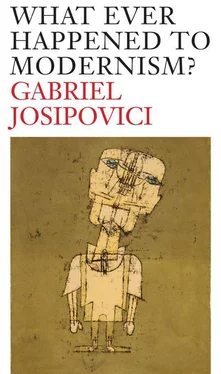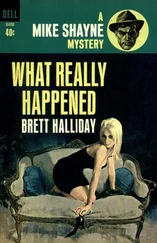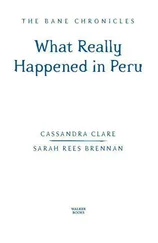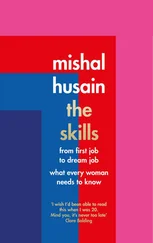Some will dismiss all this with the boo-word ‘Hegelianism’ and accuse me, along with Heller, Mann and the rest, of nostalgia or, worse, of proto-fascism, in our longing for an ordered world of community to contrast with the fragmented, liberal and individualistic world in which we live. Even Frank Kermode, a scholar noted for his openness to the new, once accused Eliot of being a closet Romantic for his notion of a moment when unity fragmented and ‘sensibility’ grew ‘dissociated’. That there is a real issue here, and one that has to be faced head-on, is attested to by Eliot's career. His prose writings of the 1930s and 1940s do seem to spring from a longing for a once-unified Europe, and it is there that some of his most notorious anti-Semitic remarks occur. Does that then invalidate his insight into seventeenth-century poetry and culture? Does not everyone who responds to poetry know what he means when he contrasts Marvell's ‘unified sensibility’ with that of the poets who followed him? Is it not possible to separate the cultural critique from the nostalgia and the prescriptiveness of how a once-lost unity can be found again? T.J. Clark, the art historian, puts the problem most clearly when, in an early footnote to his splendid Farewell to an Idea: Episodes from a History of Modernism , he writes:
I realize that I shall be taken here and elsewhere to be idealizing pre-modern society, and inventing a previous watertight world of myth and ritual, agreed-on hierarchies, implicit understandings, embodied places, and so on. There is no easy way out of this dilemma. Of course pre-Modern societies (and certainly the ones existing in Europe immediately before the spread of mercantile capitalism and the seventeenth-century crisis) were conflicted and ideologically incomplete. I am on the side of historians who have fought against the picture of a pre-modern Europe characterised by absolute cultural uniformity, immovable religious consensus, the unthinkability of alternative views of the world, etc. Nonetheless, if we do not make a distinction between societies built, however inefficiently, upon instanced and incorporated belief, with distinctions and places said to be inherited from time immemorial, and societies driven by a new kind of economic imperative, in which place and belief are subject to constant revision by the very forces that give society form, then I reckon we forfeit the chance of thinking critically about the past two hundred years. To call such comparative thinking ‘nostalgia’ (or in the present techno-ecstatic conjuncture, ‘Luddism’) is just the latest form of philistinism about history in general.
Thomas Mann himself was well aware of the problem. In fact Doctor Faustus is nothing other than his desperate and impassioned struggle with it (as, in its way, is The Magic Mountain , written twenty years earlier). The source of Leverkühn's power as a composer, as well as his despair, is his recognition of the truth of Hegel's vision of a present in which the oracles are dumb, the social structures which made their existence possible having long since given way to modern capitalist individualism. On the other hand the Germany he inhabits, which is in the grip of a party which believes that it is possible to forge a new cultic and communal society in the post-industrial world, appals and terrifies him, as much as it does Zeitblom. Can one retain the critical insights, feel the loss as real, without at the same time opting for the demented Nazi vision of a new cult? This is the question out of which the tortured novelist, writing in distant California as the Nazi dream drags Europe to its destruction, forges one of his greatest works.
2. What Shall We Have To Drink In These Deserts?
Let me try to give a little more life to that striking phrase, ‘the disenchantment of the world’, by focusing on the work of a few artists, working from the early sixteenth to the early nineteenth centuries. I could have chosen others, but these will do both as examples and as a way of introducing some of the themes that will come into prominence when we turn to the modernism of our own time.
I want to begin with three sixteenth-century artists, and, first, with a visual artist and with a work made in 1514, three years, that is, before Luther nailed his ninety-five theses to the door of the Castle Church in Wittenberg. I do this because I want to show, among other things, that these intuitions of a change in man's relation to the world are not dependent on external events such as the Protestant and French revolutions, though of course these are important contributory factors, but that all are part and parcel of the same thing, the coming to the surface of tensions which had been growing for some time and which finally burst out into the open. In that year, 1514, Albrecht Dürer, recognised even in his lifetime as the greatest Renaissance artist of the North, made an engraving to which he gave the enigmatic title Melencolia I [ figure 1 ]. An enormous brooding woman in flowing robes, with wings and a crown of leaves, sits leaning her head on her hand in an indeterminate space next to a ruined house against which a ladder is propped. An eerie moonlight blankets the scene and on the left, above a sheet of water, an ugly-looking bat spreads its wings, on which the mysterious title of the engraving is displayed. In her right hand the woman holds a compass and all around her lie other measuring instruments and tools: a pair of scales, a turned sphere of wood, a truncated rhombo-hedron, pliers, nails, a saw. On the wall behind her is an hourglass and next to it a magic square with a bell above it. From her belt, in equal disarray, hang a bunch of keys and an open purse. Sitting a little above her is a putto , busily scribbling. The two figures convey the overwhelming impression of tension and anxiety in the midst of what we paradoxically experience as both stasis and chaos.

figure 1Albrecht Dürer, Melencolia I. Engraving, 1514.

figure 2Albrecht Dürer, St Jerome in his Study . Engraving, 1514.
In his great book on the artist Erwin Panofsky points out that the engraving must not be looked at in isolation. Dürer engraved two important works in 1514, Melencolia I and St Jerome in his Study [ figure 2 ], and in every instance except one he gave them away as a pair. Indeed, Panofsky shows, they represent two contrasting views of life. The saint sits in his study, flanked by his animals. The room is bathed in warm sunshine. On the desk are only a crucifix and an inkbottle, while the saint's hat hangs on the wall behind him. Dürer has done everything within his power to render the room glowing, comfortable and warm. Even the hour-glass next to the hat and the skull on the table are less a threat than a reminder of man's natural end. The engraving represents a man redeemed from time not through the denial of time but through its acceptance; the saint who gave the Latin West its Bible is here shown at one with himself and with his God as he works, absorbed in his great task of transmission.
Even to the untrained eye the contrast with the Melencolia could not be greater. Panofsky's brilliant analysis of the iconography merely confirms one's instinctive feeling when faced with the two works. In every respect, he suggests, Dürer seems here to have wished to invert the St Jerome . The female figure with her useless wings represents art in competition with God. The Melencolia is a terrestrial craftsman cut off from all tradition and therefore incapable of productive work. ‘As for geometry,’ Panofsky quotes Dürer as saying, ‘it may prove the truth of some things but with respect to others we must resign ourselves to the opinion and judgement of men.’ This might appear a rather bland and neutral statement, but one can see what Dürer thinks of ‘the opinions and judgements of men’ when he says: ‘The lie is in our understanding, and darkness is so firmly entrenched in our mind that even our groping will fail’ — a full-blooded expression of the sense of solitude and desolation which, Luther is to suggest, only an awareness of the saving grace of Christ can overcome.
Читать дальше













